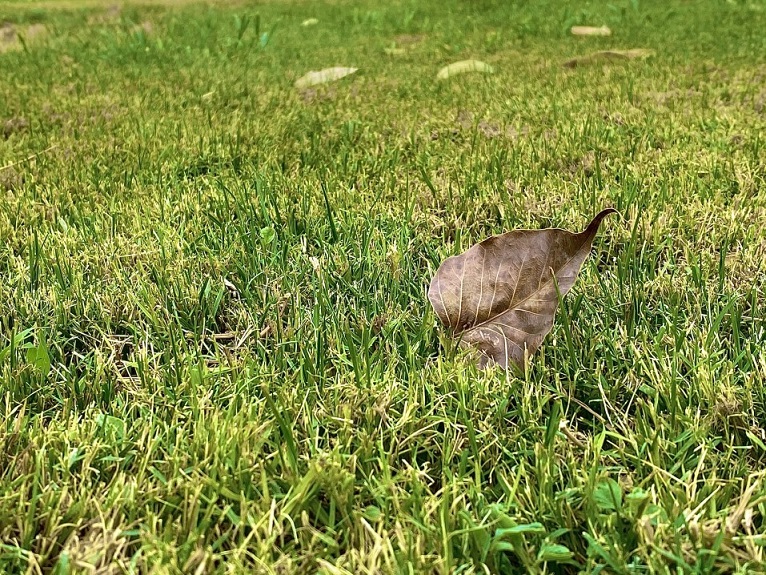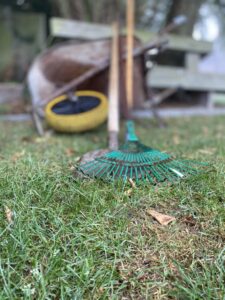Maintaining a healthy, green lawn is not always an easy task and often requires a lot of effort, time, and money to keep it in shape all year round. And while it may puzzle you, the grass always has the chance to grow back and offer you its beauty just in time for spring.
As much as dead grass seems inevitable in lawns, it helps to get more strategic to prevent it. Many yard owners take raking up dead grass seriously in the early spring to help it grow, but does it help?
Unfortunately, raking dead grass away won’t prevent brown patches and it won’t give dead grass a chance to grow back or stimulate its growth. No plant that’s completely dead all the way to its roots can grow. Instead, it will only help if the roots are still hanging in there while alive, allowing them to prop out as new grass. However, planting new grass seed altogether will do the trick and restore your lawn to the beauty it once was.
This article provides insight into whether raking in the early spring helps dead grass grow, so keep reading!
What Does Raking Do To The Grass?
Most grass types develop a thatch layer (dead grass tissue on the soil surface) for extra protection from the cold, although it won’t be much if the weather is mild and less frosty during the winter. Raking, therefore, helps break up the thatch, allowing the grass to breathe and thrive. Thatch often becomes a nuisance in the spring, it chokes out new grass growth by blocking the openings of the plant stomata, and keeps the sunlight away for photosynthesis. Thus, if you want your lawn to boom with life and get mesmerizingly greener, getting rid of the thatch can come in handy.
Besides, there’s a good chance that winter would’ve wreaked havoc on your lawn with leaves and debris littered all over. These leaves and debris won’t just make your yard irritable to the eye but also weigh heavily on the grass, blocking the conditions needed for optimum growth such as sunlight and water.
However, it would help if you went gentle while using rakes with softer tines to prevent further damage to the roots. Raking up your lawn, therefore, only offers the chance for the grass to expand rather than grow from scratch.
Can Raking After Winter Damage The Lawn?
Raking straight after winter is not only damaging to the grass roots but slowing down the recovery of your lawn.
If at all, your lawn has cruised through the winter unscathed, with the grass visibly alive, consider yourself lucky. The winter season could have reduced most of the grass by then considerably, with less or no sign of life. That means you’re only left with the roots for a leeway back into invigorating the lawn, and so, you need to handle them gently.
However, remember not to allow too much dead grass to build up as well. It will cause the roots and live grass around it to die. Thus, it is vital to get rid of any dead grass build-up.
If seeding seems more feasible, then that makes everything pretty straightforward. However, before you plant new grass seed, remove any dead grass if there’s more than half an inch of it on your lawn.
Is It OK To Rake Grass That’s Still Dormant, Wet, Or Frozen?
It’s not commendable to rake your grass when it’s still frozen, wet, too cold, or dormant. Remember that the ideal air and soil temperatures for optimal grass growth are usually higher.
When your lawn is damp and frozen, there’s a tiny chance the grass will grow because it barely clings to life. Raking up a wet and overwatered lawn not only removes the grass from the soil but also compacts the underlying soil, and this can lead to your grass growing poorly in the future.
Raking tampers with the roots – the only lifeline during this period of cold weather. And when the root density decreases, you’ll only leave the grass at a chance to survive.
Instead, raking should come in later during the spring when the grass is not dormant, turning green, and already growing vigorously. This allows it to grow stronger, regardless of the reduction in the root density or tampering with the blade count.
Besides, it would be best to be more specific with how you want to rake the lawn before choosing the most suitable rake with ideal tines. If you’re more focused on scrapping away leaves and debris, a rake having soft, plastic tines can be perfect. Also, when raking your dormant grass, try to use a lifting motion instead of dragging, just to avoid ripping it out.
You shouldn’t ignore if there’s a thick layer of leaves or other debris as it can kill the grass, harbor plant diseases, and invite pests to your yard. On the other hand, a metal thatching rake can otherwise fit better into removing thatch more impeccably.
When Can You Start Raking In The Spring?
It’s prudent that you let the grass edge out of dormancy and warm up a bit before you get on with the raking. You don’t have to go all out raking your lawn immediately when spring knocks in as you’ll do more damage than good. Waiting until there are no more freezing temperatures at night for at least a couple of weeks is a good idea.
Luckily, grass doesn’t take long to grow, and species like Bermuda Grass are proficient at it if there is plenty of sunlight and the right amount of moisture. That implies that late spring can be ideal, giving the grass the chance to survive even if you scathe the roots a bit. But still, it would be recommended to pick a suitable rake type for dethatching or removing fallen debris and rotting leaves.
If you want a healthy, green, and weed-free lawn all year round, contact our expert team at Guaranteed Green in the Atlanta, GA area. Stop searching for a reliable lawn care service for your Atlanta home − take a look at our custom weed control, fertilizer, and lawn care treatments here, and get in touch with us today!






